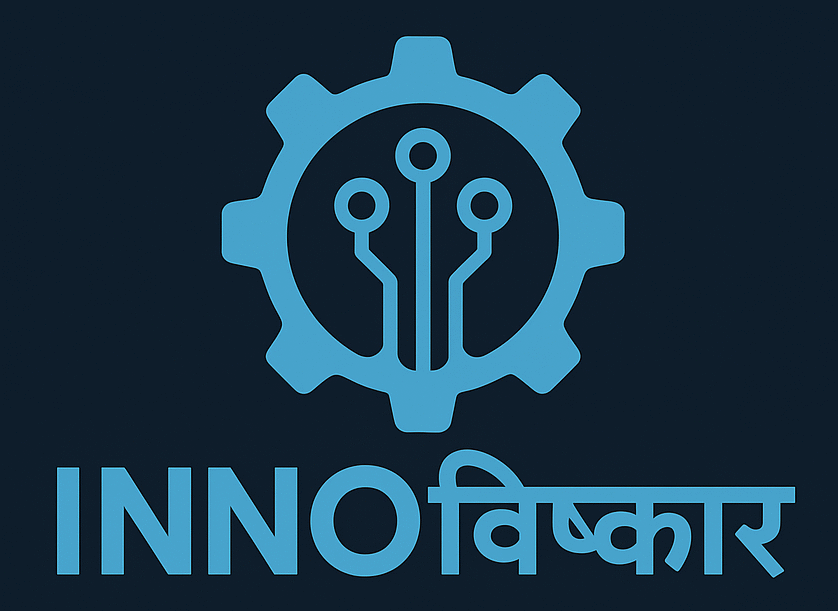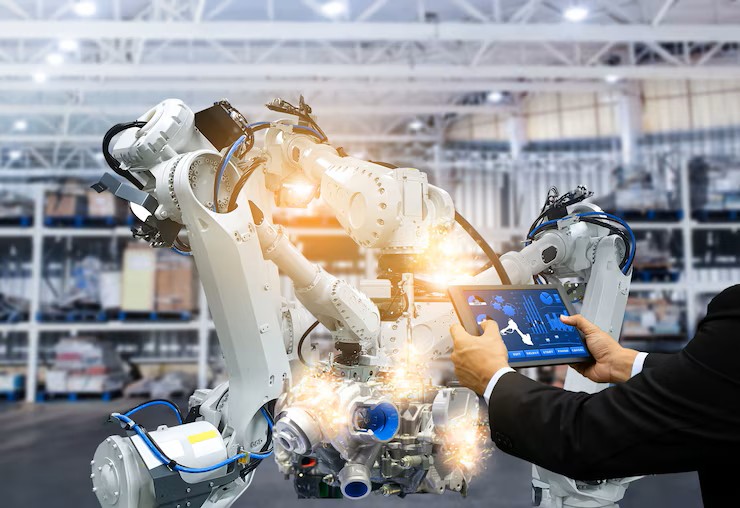In an era defined by rapid technological advancement, robotics stands at the forefront of innovation. By combining mechanics, electronics, and computer science, robotics is transforming industries and daily life—enabling smarter manufacturing, safer environments, and entirely new ways to interact with machines.
🔹 What Is Robotics?
Robotics is the interdisciplinary field dedicated to designing, building, and programming machines—robots—that can perform tasks autonomously or semi-autonomously. These machines are equipped with:
- Sensors (e.g., cameras, LiDAR, proximity sensors) to perceive their environment
- Actuators and Motors to move limbs, wheels, or grippers
- Control Systems and Algorithms (often powered by AI) to make real-time decisions
From simple robotic arms on an assembly line to advanced humanoid robots, the goal is always the same: augment human capability, improve efficiency, and handle risky or repetitive tasks.
🔹 Applications of Robotics
- Manufacturing & Automation
- Industrial Robotic Arms: Precision welding, painting, and assembly in automotive or electronics plants.
- Collaborative Robots (Cobots): Work alongside humans on tasks like packaging, quality inspection, or small-part assembly.
- Healthcare & Medical Robotics
- Surgical Robots: Instruments like the da Vinci Surgical System enable minimally invasive procedures with micrometer precision.
- Rehabilitation Robots: Exoskeletons and therapy bots that assist patients recovering mobility after injury.
- Pharmacy Automation: Automated dispensing systems that ensure accuracy and reduce prescription errors.
- Logistics & Warehousing
- Automated Guided Vehicles (AGVs): Transport materials through warehouses, picking orders and restocking shelves.
- Sorting Robots: Use computer vision to identify packages and route them correctly in fulfillment centers.
- Agriculture & Farming
- Autonomous Tractors & Harvesters: GPS-guided machines that plant, monitor, and harvest crops with minimal human intervention.
- Drones & Field Robots: Survey crop health, apply precise doses of fertilizer or pesticides, and collect data on soil conditions.
- Service & Hospitality
- Delivery Robots: Small, wheeled robots that navigate sidewalks or campus corridors to deliver food or packages.
- Reception/Concierge Robots: Greet guests, answer basic questions, and guide visitors in hotels or office buildings.
- Defense & Security
- Unmanned Aerial Vehicles (UAVs): Reconnaissance, surveillance, and remote sensing in high-risk zones.
- Bomb Disposal Robots: Remote-controlled units that handle explosives, protecting human operators.
🔹 Benefits of Robotics
- Enhanced Efficiency & Productivity
Robots perform repetitive or dangerous tasks 24/7 without fatigue—drastically improving throughput on assembly lines or in logistics centers. - Improved Safety
By assigning hazardous tasks (e.g., chemical handling, high-temperature welding, bomb disposal) to robots, workplaces become safer. - Consistent Quality
Robot precision and accuracy reduce defects, waste, and rework—ensuring uniform quality across thousands of units. - Cost Savings
Though initial investment can be high, long-term savings come from reduced labor costs, fewer errors, and minimized downtime. - Scalability & Flexibility
Modern robotic systems can be reprogrammed or retooled for new tasks—adapting quickly when product lines or demand change.
🔹 Skill Development & Career Opportunities
Learning robotics opens doors to a thriving field that values both technical expertise and creative problem-solving. Whether you’re a student, hobbyist, or professional, here’s how you can benefit:
- Technical Skill Enhancement
- Programming Languages: Python, C++, and ROS (Robot Operating System) are foundational.
- Electronics & Embedded Systems: Understanding microcontrollers (e.g., Arduino, Raspberry Pi) and circuit design.
- Mechanical Design & CAD: Designing robot parts and simulating kinematics in software like SolidWorks or Fusion 360.
- AI & Computer Vision: Using machine learning frameworks (e.g., TensorFlow, OpenCV) to give robots perception and intelligence.
- Part-Time & Freelance Opportunities
- Consulting & Prototyping: Small businesses or startups often seek help creating proof-of-concept robots for demonstrations.
- Repair & Maintenance Services: Local manufacturers need technicians who can troubleshoot and maintain robotic cells.
- Online Courses & Content Creation: If you master a niche (e.g., ROS tutorials or 3D-printed robot kits), you can earn by teaching others via YouTube or online platforms.
- Hackathons & Competitions: Participating in robotics competitions (e.g., FIRST Robotics, RoboCup) can lead to sponsorships, internships, or direct job offers.
- Full-Time Career Paths
- Robotics Engineer/Developer: Designing hardware, writing control software, and integrating systems in industries like automotive or aerospace.
- Automation Specialist: Implementing robotic solutions on factory floors, optimizing processes, and overseeing deployments.
- R&D Engineer: Working on next-generation robot prototypes, exploring AI-driven autonomy, or creating new actuation methods.
- Field Service Engineer: Traveling to client sites to install, calibrate, and maintain robotic equipment.
🔹 Latest Trends in Robotics
- Collaborative Robotics (Cobots)
- Lightweight, safety-certified robots that can work alongside humans without heavy guarding or cages.
- AI-Powered Autonomy
- Robots using deep learning and reinforcement learning to navigate dynamic environments (e.g., warehouses with moving people).
- Soft Robotics & Wearables
- Flexible, compliant robots made of soft materials—ideal for delicate tasks like fruit harvesting or human-robot interaction.
- Swarm Robotics
- Small robots coordinating as a group (swarms) to perform tasks like environmental monitoring, search-and-rescue, or precision agriculture.
- Edge Computing in Robotics
- Processing data locally on the robot (instead of relying fully on the cloud) for faster real-time decision-making.
- Bio-Inspired Robots
- Designs modeled after animals and insects (e.g., quadruped robots, flying drones with flapping wings) for improved agility and energy efficiency.
🔹 Why Robotics Matters
- Economic Impact
- Robotics accelerates manufacturing productivity, enables new business models (e.g., robot-as-a-service), and fosters innovation across sectors.
- Societal Benefits
- From remote surgeries to disaster-response drones, robotics can improve healthcare access, enhance public safety, and address environmental challenges.
- Global Competitiveness
- Nations investing in robotics research and infrastructure gain a strategic advantage in high-tech industries—driving job creation and export growth.
- Future-Ready Workforce
- As automation becomes more pervasive, workers skilled in robotics and AI will be in high demand, ensuring career stability and higher earning potential.
✅ Conclusion
Robotics is more than just machines—it’s the combination of engineering excellence, intelligent algorithms, and human creativity that drives progress. By embracing robotics, businesses can achieve higher efficiency, safer workplaces, and unparalleled innovation. For individuals, mastering robotics offers not only a chance to improve one’s skillset but also opens doors to dynamic, well-paid career opportunities.
Whether you’re looking to implement robotic solutions in your factory or start learning from scratch, the time to explore robotics is now—because the future is being built one robot at a time.


